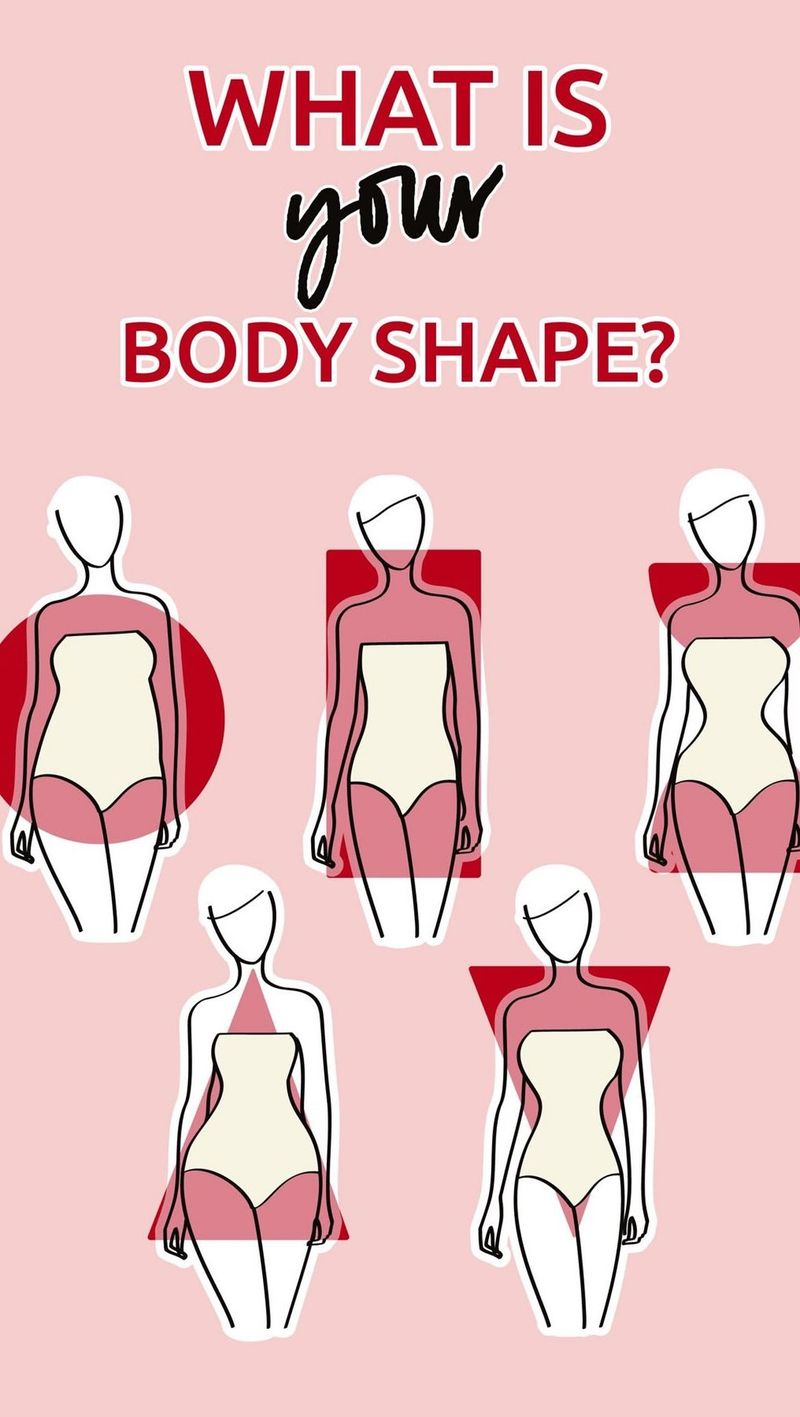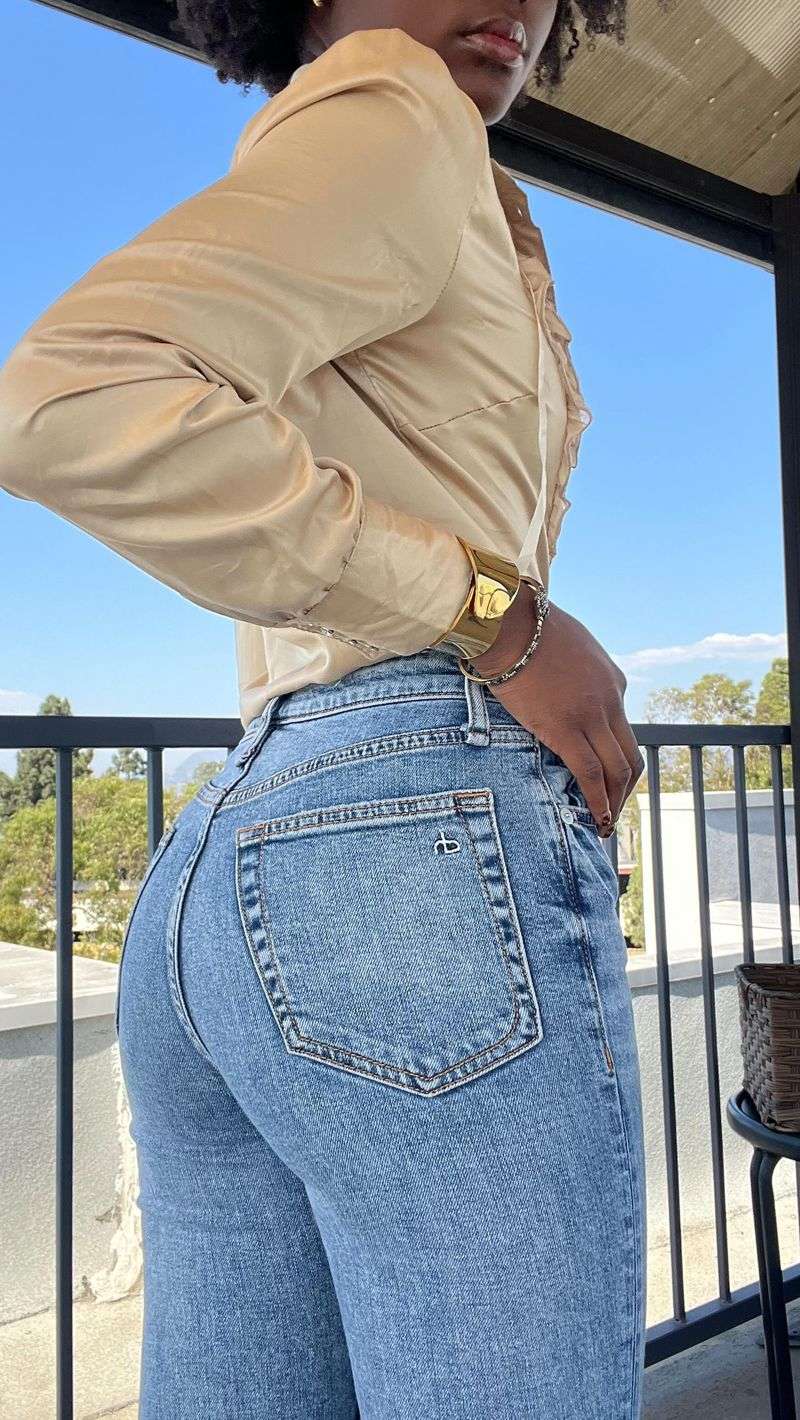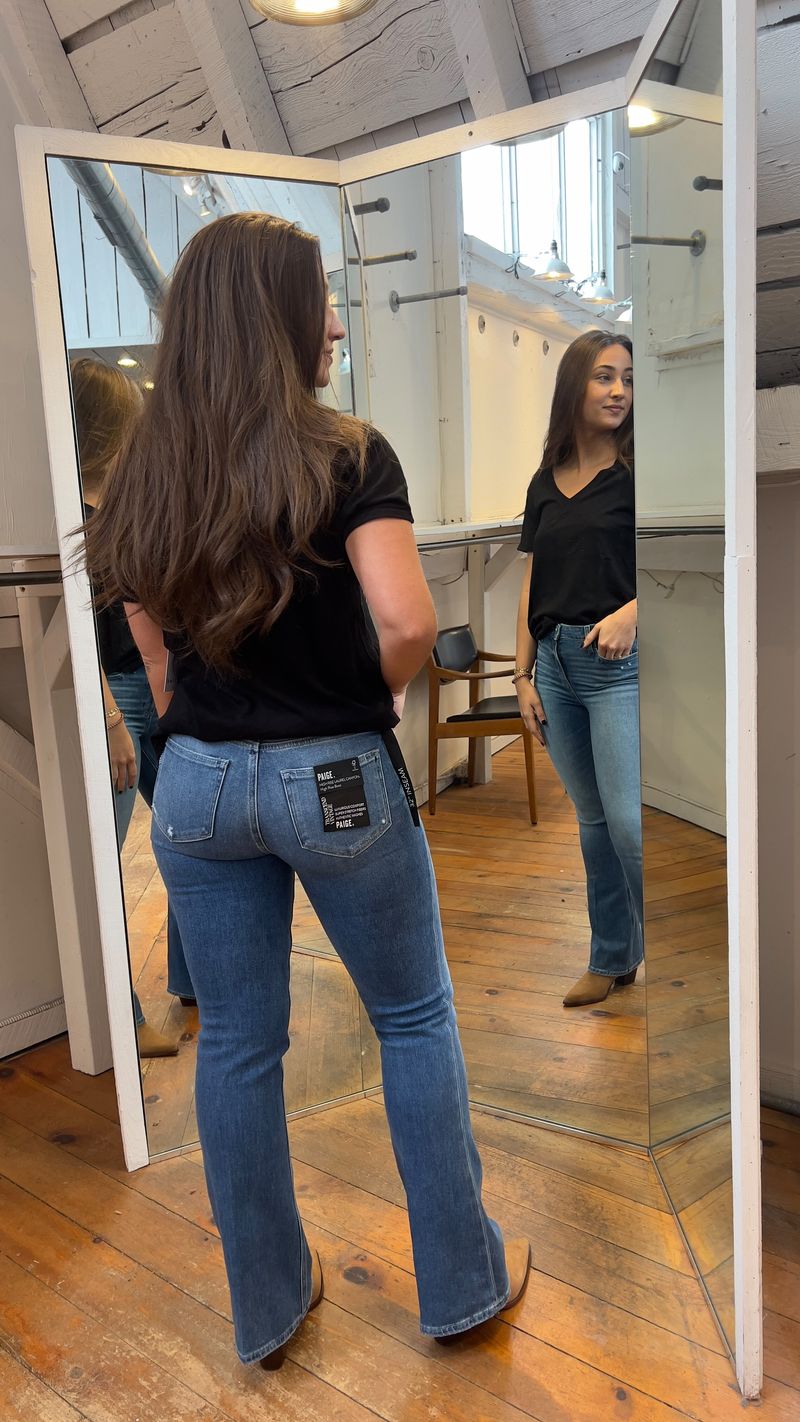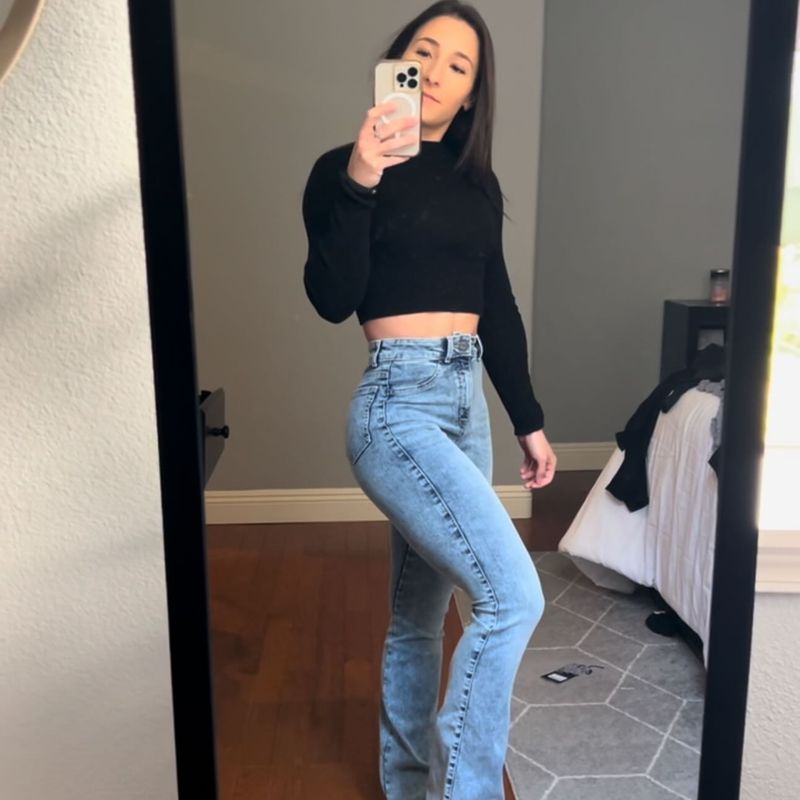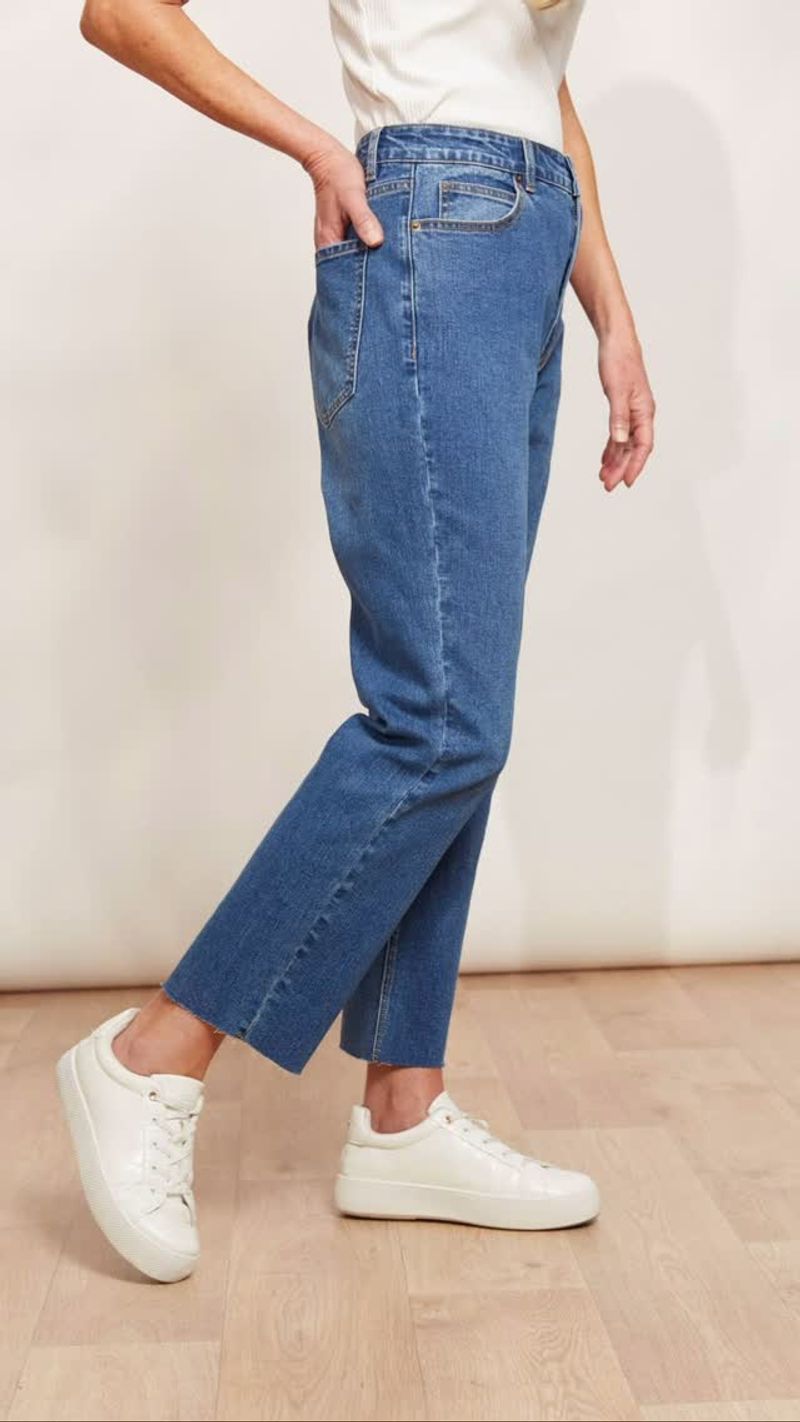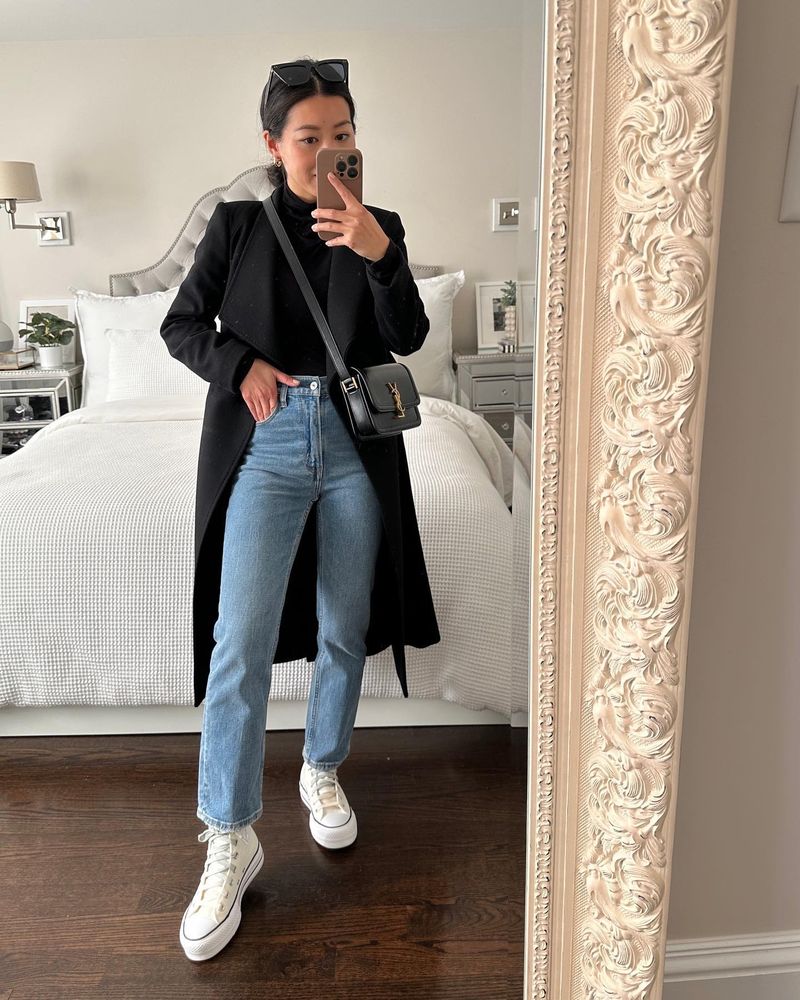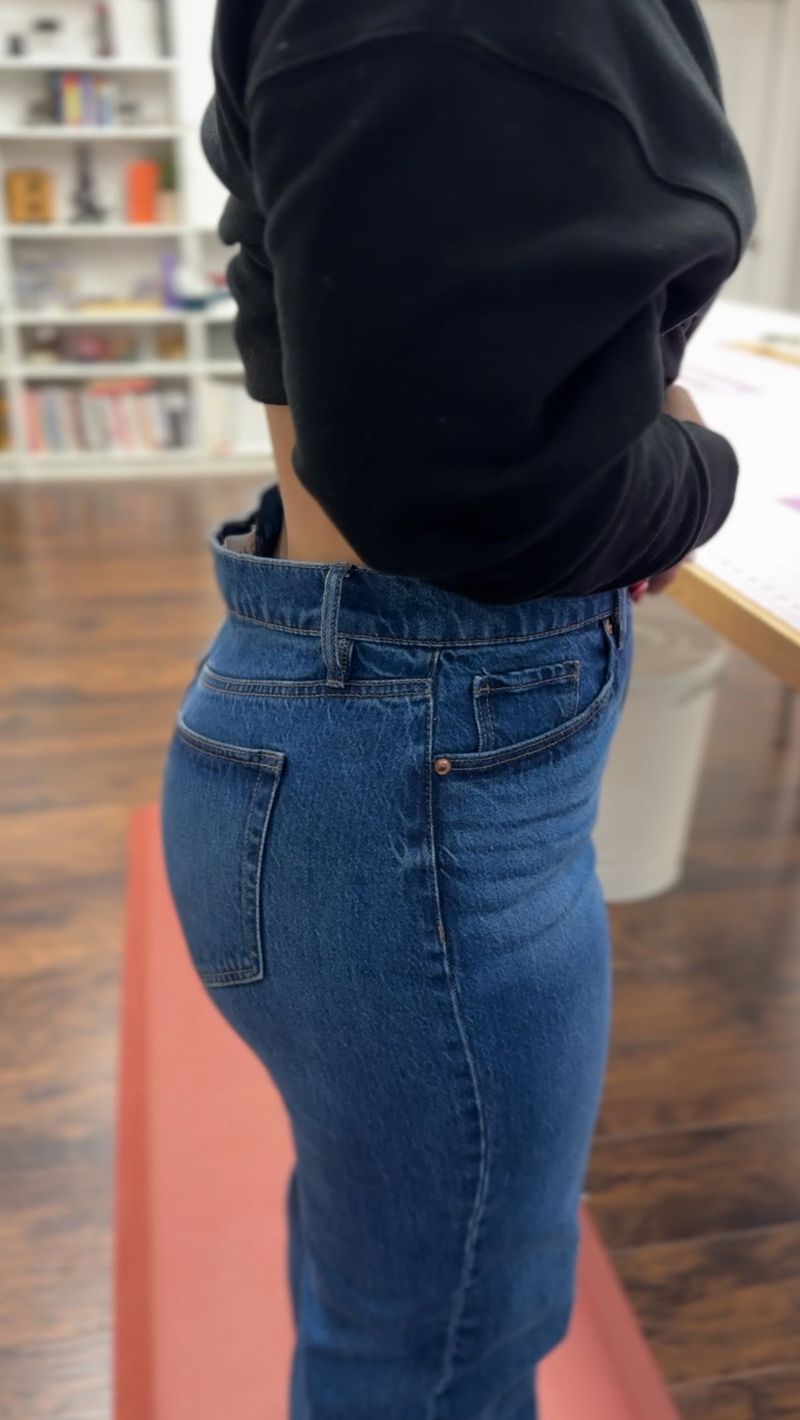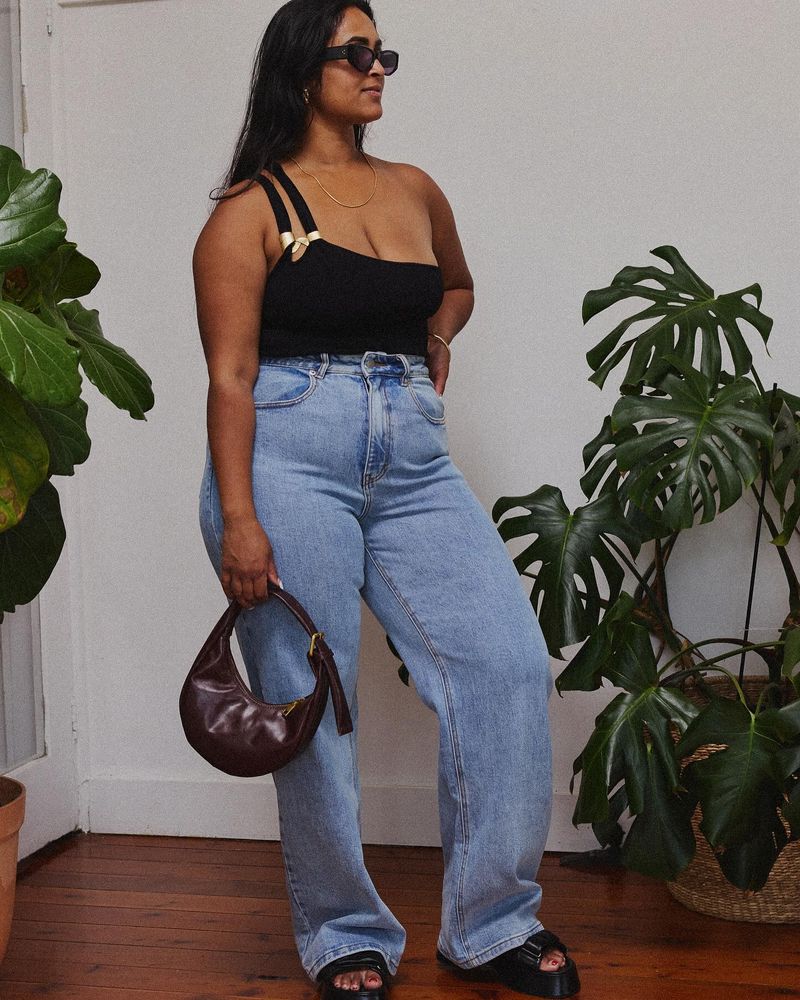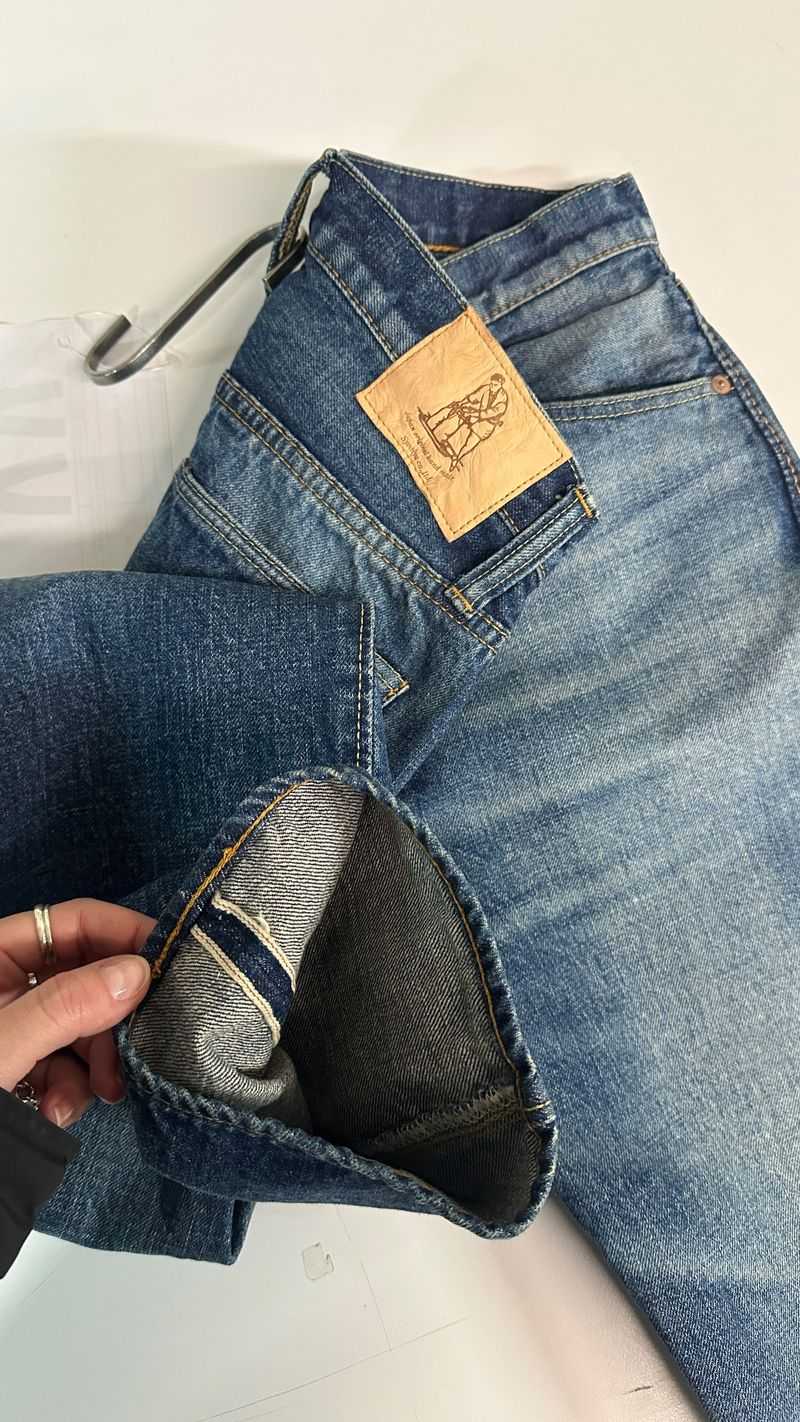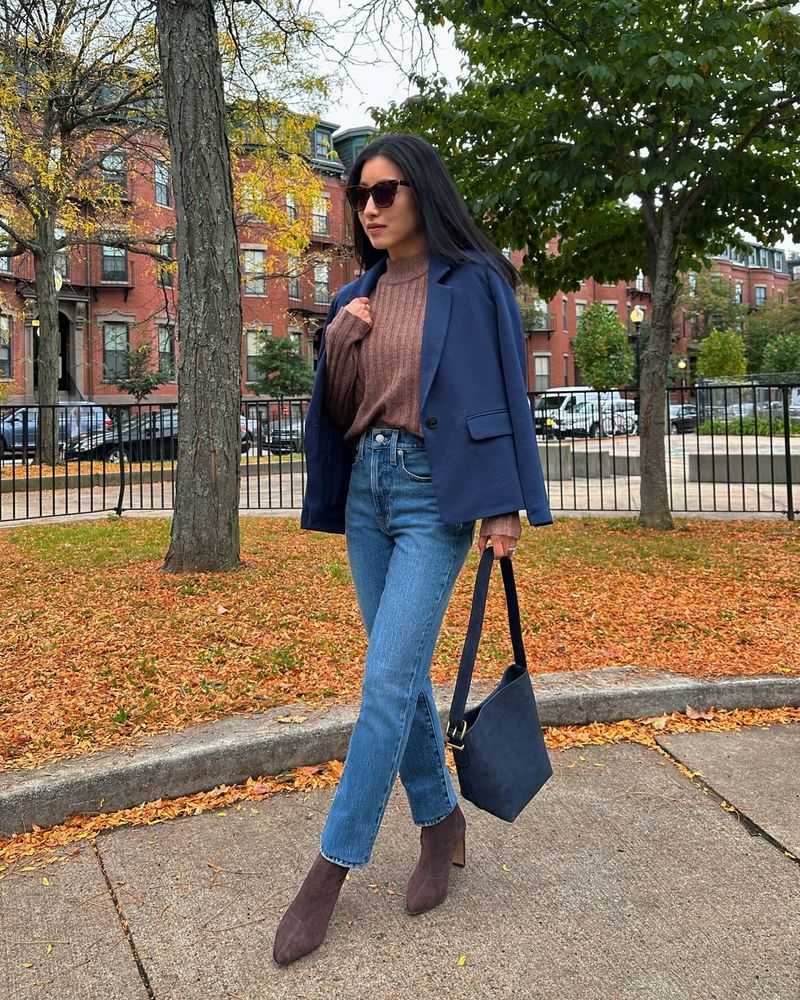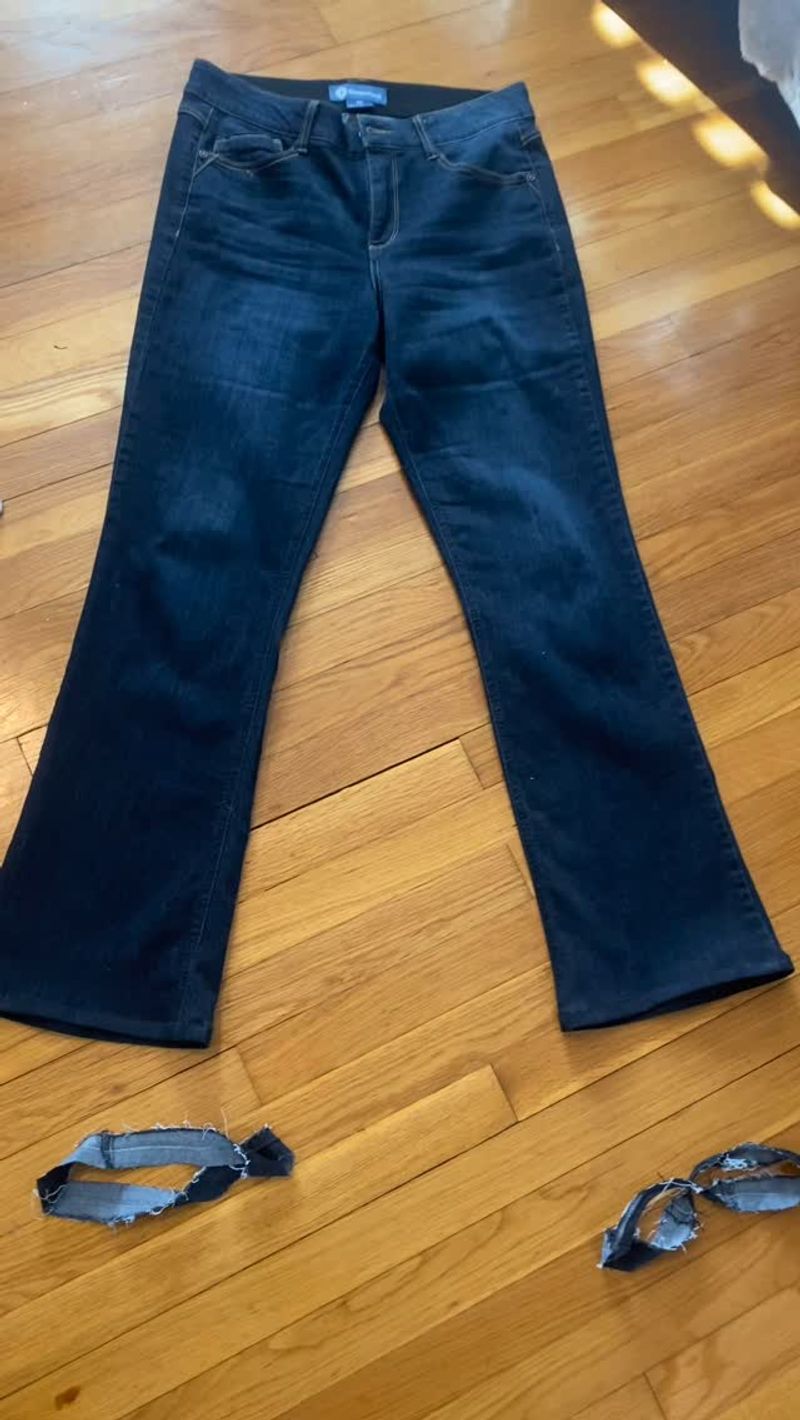12 Tips For Finding The Perfect Pair Of Jeans
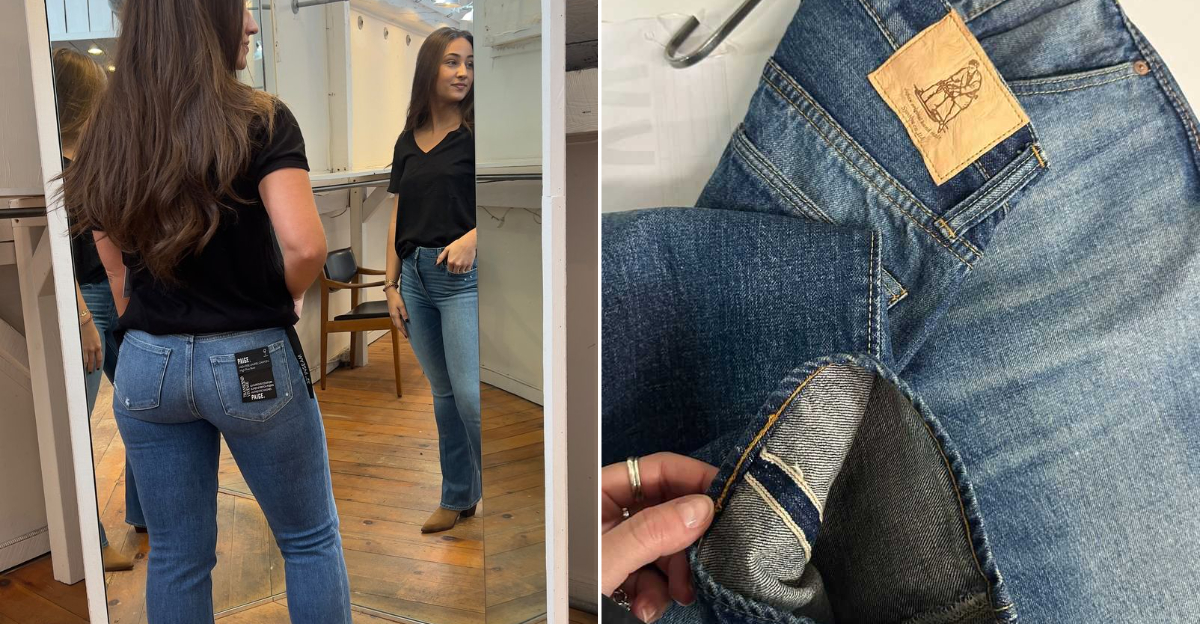
Finding jeans that fit just right can feel like searching for a needle in a haystack.
I’ve spent countless hours in fitting rooms, wrestling with denim that’s either too tight, too loose, or just plain wrong.
After years of trial and error (and too many shopping mistakes to count), I’ve figured out what actually works.
These tips will save you time, money, and the frustration of ending up with yet another pair that collects dust in your closet.
1. Know Your Body Shape First
Your body shape matters more than any trend or brand name when hunting for jeans. I learned this the hard way after buying countless pairs that looked amazing on models but terrible on me. Different cuts flatter different figures—straight legs balance pear shapes, while high-waisted styles often work wonders for apple shapes.
For hourglass figures, look for jeans that define the waist without gapping at the back. Take honest measurements of your waist, hips, and inseam before shopping. Keep these numbers handy on your phone. This simple step eliminates guesswork and helps narrow down options before you even step into a store or click ‘add to cart.’
2. Stretch Factor Matters
Not all stretch is created equal in the denim world. I once bought jeans with too much elastane that sagged terribly by lunchtime, making me look like I’d borrowed clothes from someone twice my size. Look for jeans with about 2% elastane for comfortable movement without the dreaded sag.
Pure 100% cotton denim holds shape better but requires breaking in and offers less give when you sit or bend. The best test? Grab the fabric and stretch it with your hands, then release. Quality stretch denim should snap back immediately. If it stays stretched out in the store, imagine how it’ll look after a few hours of wear!
3. Rise Height Changes Everything
The rise of your jeans—where they sit relative to your waist—can make or break your comfort and confidence. My short-waisted frame drowns in ultra-high rises, while my friend with longer proportions finds low-rise jeans unbearable. High-rise jeans typically hit at or above the belly button, offering tummy control and preventing the dreaded “muffin top.”
Mid-rise sits just below the belly button—versatile for most body types. Low-rise jeans hit at the hips and work best if you have a flat stomach and longer torso. Try different rises with the same top to see the dramatic difference each makes to your overall silhouette. The right rise should feel comfortable when sitting and not dig into your stomach.
4. Pocket Placement Is Crucial
Pockets aren’t just functional—they’re optical illusions that can make your backside look completely different. I never understood why certain jeans made me look flatter until a stylist pointed out the pocket problem. Larger pockets placed slightly lower and angled inward create a lifted, rounder appearance. Tiny pockets or those set too high or far apart can make even the perkiest behind look flat or wide.
The space between pockets matters too—they should be proportional to your frame. Stand with your back to a three-way mirror and check how the pockets sit. If they pucker or gape, the jeans don’t fit properly. The best pockets follow your natural curves without distortion.
5. Do The Sit-And-Squat Test
Never trust jeans that only feel good when you’re standing still. My most regrettable purchases looked perfect in the dressing room mirror until I sat down and felt like I was wearing a corset. In the fitting room, sit down on a chair or bench. If the waistband digs in painfully, creates a muffin top, or gaps at the back, keep looking. Then do a deep squat—can you move freely without feeling restricted?
Do the knees bag out instantly? Bend over to touch your toes too. If you’re showing more than you’d like in the back, you need a higher rise or different size. These movement tests reveal the true character of jeans that standing poses hide.
6. Wash Affects More Than Color
The wash of your jeans isn’t just about style preference—it significantly impacts how slimming they appear. I spent years avoiding darker washes until realizing they were actually more flattering on my figure. Darker uniform washes (deep indigo or black) create a sleeker silhouette and hide lumps and bumps.
Lighter washes draw attention to areas where the light hits, potentially highlighting parts you’d rather downplay. Whiskering and fading across thighs can make them appear wider. Consider where the jean has strategic fading. Vertical fading along the center of the leg creates a lengthening effect, while horizontal fading can visually widen that area. Choose washes that place emphasis where you want it.
7. Length Should Match Your Shoes
Buying jeans without considering what shoes you’ll wear them with is a rookie mistake I made for years. The perfect length with sneakers becomes a tripping hazard with flats or looks awkwardly short with boots. Ideally, straight and bootcut jeans should hit about ¼ inch from the ground at the back when wearing your intended shoes.
Skinny jeans look best ending right at or slightly above the ankle bone. For cropped styles, aim for 1-3 inches above the ankle, not an awkward mid-calf length. Bring your most-worn shoes to try on with potential jeans. Or better yet, buy jeans for specific shoe types—some for heels, others for flats. This approach has saved me countless tailor visits.
8. Waistband Gap Signals Poor Fit
That annoying back gap where your waistband stands away from your body isn’t something you should just accept. For years I thought this was normal until discovering it’s actually a clear sign of poor fit. The gap happens when jeans fit your hips and thighs but are too big for your waist. It’s especially common for those with hourglass or pear shapes.
Some brands now offer “curvy fit” jeans specifically designed with more room in the hips relative to the waist. While a tailor can fix this issue, it’s better to find jeans that fit properly from the start. Try sitting down and bending forward—if you can fit more than two fingers in the back waistband, keep looking. The perfect pair should hug your waist comfortably without gapping.
9. Ignore The Size Number
The number on the tag is the biggest lie in fashion. I own jeans ranging from size 8 to 14 that all fit perfectly—proof that sizing is completely inconsistent between brands and even within the same brand. Vanity sizing has made numbers virtually meaningless. Some brands deliberately label larger clothes with smaller numbers to make shoppers feel good.
Others use European or inch measurements that convert differently. Focus on how jeans actually fit your body, not what the label says. Try multiple sizes of the same style, even ones you think won’t fit. I’ve found my perfect pair by grabbing sizes above and below what I thought I needed. When jeans feel right, the number becomes irrelevant.
10. Raw Denim Requires Commitment
Raw denim jeans are like pets—they require dedication but reward you with personalized perfection. My first pair was torture for weeks before becoming the best-fitting jeans I’ve ever owned. Unlike pre-washed denim, raw (or “dry”) denim hasn’t been treated or washed. They start stiff and uncomfortable but mold to your body over time, creating a custom fit.
The break-in period can take weeks of regular wear, and traditionalists advise against washing them for months. These jeans develop unique fade patterns based on how you move and live. If you’re willing to endure the break-in period, raw denim offers unparalleled durability and personalization. They’re not for everyone, but they’re worth considering if you value quality over immediate comfort.
11. Consider Cost Per Wear
Sticker shock almost kept me from buying my favorite jeans, until I realized how math actually works in your favor with quality denim. The $25 jeans I used to buy lasted a few months before stretching out, fading badly, or developing holes. Premium jeans might cost $100-200, but often last years with proper care. Divide the price by the number of wears, and suddenly expensive jeans become the budget-friendly choice.
My $180 jeans have lasted five years of weekly wear—that’s less than $1 per wear and dropping. Look for signs of quality: substantial fabric weight, reinforced stitching at stress points, and selvedge outseams. These features typically indicate jeans built to last. The best investment pairs are in classic styles that won’t look dated next season.
12. Alterations Make Good Jeans Perfect
Finding jeans that fit perfectly off the rack is like winning the lottery—rare and wonderful. I wasted years settling for “good enough” before discovering the magic of simple alterations. Even expensive designer jeans often benefit from tailoring. Common alterations include hemming length, taking in the waist, tapering legs, or adjusting rise.
Many premium denim shops offer free or discounted alterations with purchase. When shopping, focus on finding jeans that fit perfectly in the most difficult-to-alter areas—typically the hips, thighs, and rear. Waists can be taken in, lengths shortened, and legs tapered relatively easily. A $20-40 alteration can transform jeans from merely acceptable to absolutely perfect, extending their lifespan in your regular rotation.

